This will be a "Meta" answer referring to the other answers to correct some misconceptions.
During VLSI manufacture different resolutions of lithography are used at the various levels and ONLY the most modern and most finest details are used at the the GATE definition level. Even steps previous to the Poly Silicon definition are done with older lithography tools (like active area definition STI - LOCOS etc.).
The reason is very simple, why use the most advanced (and thus most expensive) tools that use the most expensive masks to define layers that inherently need less resolution?
Indeed, top Metal tends to be very thick to support more current to prevent electro-migration and to reduce resistance of the power rails.
For example, in a 180 nm process the gate is defined using KrF laser based lithography @ 248 nm with a 5X phase change mask. This is also used for contacts. Metal 1 might be done in a stepper than is using i-line @ 365nm and also a 5X mask, but with no phase correction applied.
The point being, top layers of the chip are much much lower resolution and much much higher pitch than what the process is "defined as" - and even that definition gets funky a lot of the time.
Top metal might be have a minimum features size as large as 3um in that 180 nm process above, I checked.
Top Die passivation is typically either Si3N4 or polyimide. Which has been removed in those pictures.
So the most probable thing is that those pictures are actually visible light pictures taken in a microscope. The colors may be because the structures height are on the order of the wavelength of light and have diffractive effects. But since we don't have scale it's not safe to be definite.
But it could be a ElectronMicrograph which has been colorized for "prettiness". It does seem to come from a cover of a book, and who knows what teh art department does there.
So I'm not willing to say one of the other that it is either optical or SEM. @W5VO observes that the depth of field seems too large for optical, and I agree. BUt we don't know scale here, those structure could easily be 10's of microns given the era.
Never heard of an electron microgram - under standard naming conventions that would translate into a "small electron message" I also can't find links to any thing mentioning that. So I'd love to hear what that might be.

